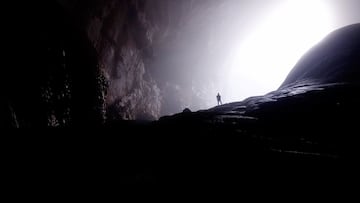Physicist confirms huge amounts of water are stored in minerals hundreds of miles under the Earth’s surface
There has been much debate among scientists about whether an area deep within the Earth is dry as a rock or sloshing with water. They may now know.

The mysteries of planet Earth never seem to cease despite all the knowledge mankind has acquired over the years. Fortunately, that makes it possible for researchers to constantly make new discoveries that science fiction writers have theorized and which become fodder for even more ideas.
One unexplored part of the planet that captured the imagination of Jules Verne was what is at the center of the Earth. When the French novelist envisioned there being a vast ocean deep within the planet, he wasn’t too far off according to recent discoveries.
Scientists find evidence that hints at massive subterranean ocean
There has been much debate among scientists about whether an area deep within the Earth known as the ‘transition zone’, a region between the upper and lower mantle, is dry as a rock or sloshing with water. A chance acquisition in 2009 of a “three-millimeter-wide, dirty-looking brown diamond” by a graduate student of Dr. Graham Pearson, geologist and geochemist at the University of Alberta, gave the first evidence that it may be the latter.
Inside the diamond, hidden from the naked eye, was a rare mineral called ringwoodite. It, along with other similar minerals called spinels, has the special property that it can hold water. Within the one Pearson’s team discovered, 1.5 per cent of its weight was water, a significant amount.
The mineral was first confirmed to exist in 1969 from a sample found in the Tenham meteorite from Australia and has been found on others since, but this was the first terrestrial sample ever found. That’s because intense pressure is needed to form ringwoodite, meaning that it can only come from extremely deep within the Earth, between depths of 255 and 410 miles (410 – 660 km).
The diamond Pearson’s team analyzed had been brought to the surface by a kimberlite volcanic rock, the deepest kind of volcanic rocks that there are. It was later pulled from the gravel of a riverbed in Brazil by an artisan miner who sold it to the researchers for $20.
It is believed that ringwoodite may exist in large quantities in the transition zone, and proof that this could be true was found a few years ago. In 2022, a mineral physicist who was doing research at the Gemological Institute of America, Tingting Gu, discovered a diamond with a bit of the mantle trapped inside from Botswana.
It contained not just ringwoodite, but also two other minerals which can only form at depths of 410 miles or more.
“If you only have one sample, it could just be a local hydrous region,” Suzette Timmerman, a mantle geochemist and postdoctoral fellow at the University of Alberta told Scientific American, “whereas now that we have the second sample, we can already tell it’s not just a single occurrence. It’s likely to be widespread.”
These findings suggest that the interior of the Earth could contain more water than that which is present on the surface. While not in liquid form, trapped within these rocks, it could play an important role in plate tectonics and volcanism, contributing to the development of magma plumes, mantle upwellings, that are hotspots for volcanoes.
Related stories
Get your game on! Whether you’re into NFL touchdowns, NBA buzzer-beaters, world-class soccer goals, or MLB home runs, our app has it all.
Dive into live coverage, expert insights, breaking news, exclusive videos, and more – plus, stay updated on the latest in current affairs and entertainment. Download now for all-access coverage, right at your fingertips – anytime, anywhere.

Complete your personal details to comment